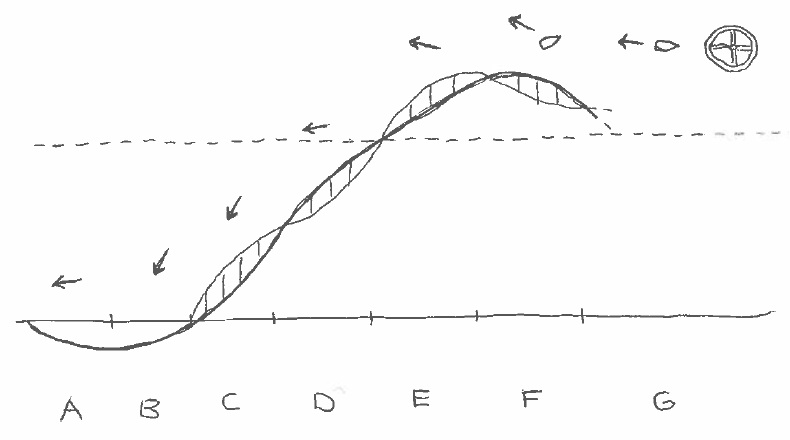|
Size: 1283
Comment:
|
← Revision 3 as of 2011-05-24 16:14:26 ⇥
Size: 1528
Comment:
|
| Deletions are marked like this. | Additions are marked like this. |
| Line 24: | Line 24: |
[[attachment:VacuumTunnel.pdf]] This file by Sean Anderson Barton has some ideas regarding the construction of vacuum tunnels, but of course, there is a bit of a question mark regarding how a structure like that behaves in the jet stream. |
Kristian Andresen
I am a PhD student at the Technical University of Denmark, working on fuel cells.
This is my handwaving sketch of what a hybrid between the Startram and the Launch Loop would look like:

A: Acceleration is primarily horizontal.
B: Acceleration is upwards.
C: Westbound track acts as a suspension bridge, and the vacuum tunnel is buoyant, so upwards acceleration continues.
D: Curvature changes as the decreased atmospheric pressure reduces buoyancy and due to the negative suspension bridge effect, so g forces return towards horizontal.
E: At the end of the spaceship run where the speed is greatest, the westbound rotor is again above the eastbound, keeping the track almost straight and g forces aboard the ship managable. The spaceship begins thrusting prior to detaching from the track, with the nozzle pointing away from the track.
F: Just after the spaceship leaves the launch loop, the westbound rotor is below, pulling the eastbound rotor back to ground level.
G: Spaceship docks with station while thrusting all the way. At no point are passengers subjected to freefall, and the entire ride is not too dissimilar to taking the subway.
This file by Sean Anderson Barton has some ideas regarding the construction of vacuum tunnels, but of course, there is a bit of a question mark regarding how a structure like that behaves in the jet stream.
